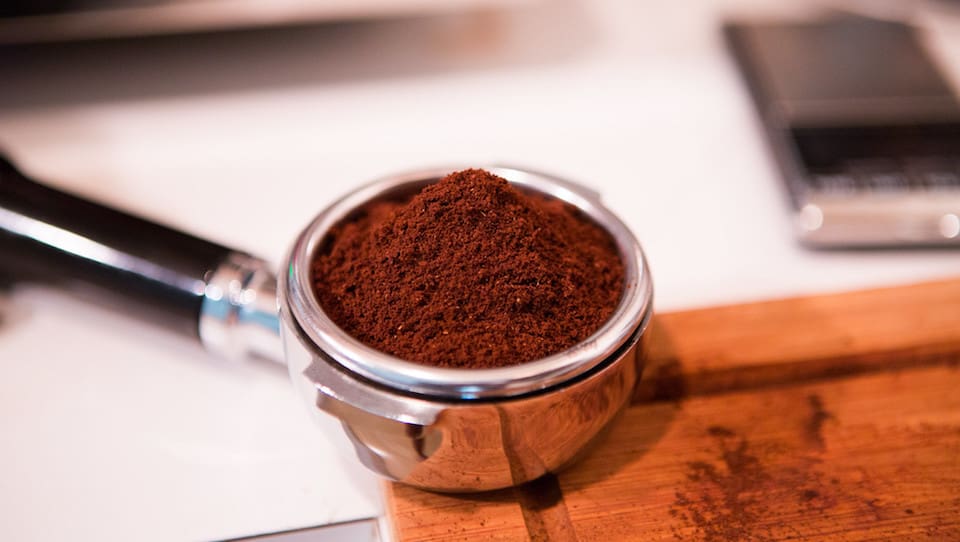Just so you know, as an Amazon Associate we earn from qualifying purchases made via bold red links, buttons or images.
Last Updated on December 9, 2023
The best espresso beans are the fresh ones.
I want to be clear about that one essential truth, because it’s an easy one to forget when you’re all caught up in exotic flavor profiles and tasting notes. Good espresso beans should not be allowed to grow old. Whether you’re using espresso roast coffee created specifically for pulling shots, or an everyday medium roast, you’ll get the best results when the beans are fresh.
You can make sure you’re always enjoying fresh beans by using a subscription service that delivers them to your door every month. Atlas Coffee Club is a particularly fun service, because they surprise you with a selection from a different country each month.
Within a day of roasting the coffee, they put it into a little box with a postcard from the country of origin, and another little card that describes the coffee and how you can get the most out of it. Then they ship it to you.
A dark roast from Papua New Guinea landed on my doorstep last week, and it was like a smoky swirl of cinnamon, anise and honey. Next month it will be something totally different. You never know what you’re going to get, but after a year of Atlas, you’ll feel like a world traveler.
I’d put one of their coffees on this list, but because their selection is ever-changing, you might not be able to order it by the time you read this. You’re better off just signing up for a subscription and letting them surprise you.
With that out of the way, let’s get to our podium picks for the best espresso beans.
Our top 3 picks
1. Lavazza Super Crema
Intelligentsia Black Cat Classic
3. Stumptown Hair Bender
We tried to include something for everyone on our podium. The Lavazza is a classic Italian espresso blend, the Intelligentsia a test of brewing skill, and the Stumptown pure comfort.
Now let’s take a quick glance at our full list of eight contenders before we break them all down in detail.
Best espresso beans at a glance
Best espresso beans in detail
1. Lavazza Super Crema Espresso
- toffee and fudge
- medium-dark roast
- smooth and creamy
https://m.media-amazon.com/images/I/41fSLX+ErrL.jpg
Check availability
Lavazza is an Italian company that has been roasting coffee since 1895, the early days of espresso. It’s among the most famous Italian coffee brands, particularly in Europe, and their Super Crema Espresso has that classic European style.
The beans are an 80/20 blend of Arabica and Robusta that come from Central America, Indonesia, Brazil, India and Colombia. They are roasted in Italy.
This is a medium-to-dark roast that is dry, not oily. The coffee it produces doesn’t have a big, bold flavor profile, but it is mild and a bit sweet. You’ll almost certainly taste honey and almonds, and perhaps some more subtle fruit and hazelnut. Maybe even a hint of smoke.
The Robusta gives it a bit of acidity, but the caffeine is still relatively low due to the low 80/20 ratio.
The signature characteristic of this blend may be its rich, velvety crema which lasts a long time on top of your shot.
Because they’re coming from Italy, these beans may take a while to get to you. Don’t delay in drinking them.
2. Intelligentsia Black Cat Classic
- dark chocolate, nuts and cherries
- medium-dark roast
- sweet with bright acidity
https://m.media-amazon.com/images/I/41pO3M-zF5L.jpg
Check availability
Intelligentsia is a long-time player in specialty coffee, and their Black Cat Classic is their signature espresso blend. They use direct-trade beans from Brazil and Colombia to create a coffee that can sweep you away to northern Italy if you pull your shot right.
It can be quite sweet, with notes of dark chocolate, toasted almond and cherry, but also plenty of bright acidity. I wouldn’t call it a forgiving blend, because it takes some practice on your espresso machine to bring out all these flavours in just the right way. Still, once you’ve got the process down you’ll have an espresso like no other.
Black Cat is great on its own, but pairs very nicely with milk as well.
3. Stumptown Hair Bender
- toffee and fudge
- medium-dark roast
- smooth and creamy
https://m.media-amazon.com/images/I/51bntsUPTXL.jpg
See Deal
Stumptown is an American favourite, and Hair Bender, their first blend, is still as popular as ever.
The beans come from Indonesia, Latin America and Africa, and they’re roasted to a medium-dark colour in Portland, without any surface oil to gum up the grinder.
The coffee is sweet, rich, complex and well-balanced. Some might even say smooth and creamy. The toffee taste is undeniable, accompanied by dark chocolate or perhaps fudge. You might also pick up some sweet cherry and citrus.
It’s a smooth, creamy drink. For me, its flavor profile nestles into that sweet spot between the fruity medium roasts and the charred darks.
4. Koffee Kult Dark Roast
- cinnamon and chocolate
- dark roast
- smooth with low acidity
https://m.media-amazon.com/images/I/41FbtbbKCUL.jpg
See Deal
Koffee Kult’s Dark Roast has aromas that pull you in like warm hug.
They come from certified organic and fair trade Arabica beans sourced from Guatemala, Colombia, and Sumatra, and roasted in small batches in Hollywood, Florida.
They produce an espresso blend that is rich, smooth and low on acid. You’ll notice cinnamon, spice and chocolate, along with a hint of nuttiness. And while roasts as dark as this can sometimes result in a hint of bitterness, with these beans you can avoid it with the right grind (not too fine), tamping pressure (not too strong) and brew time (not too long).
5. Kicking Horse Cliff Hanger Espresso
- dark berries, brown sugar and cocoa
- medium roast
- bright and complex
- exceptional crema
https://m.media-amazon.com/images/I/41Uv+t2ezYL.jpg
See Deal
It’s nice to give a shoutout to these guys from my home province of British Columbia, but their Cliff Hanger Espresso makes this list strictly on the merits of their roast.
Their 100% organic and fair-trade Arabica beans come from Indonesia, Latin America and Africa. Kicking Horse roasts them to a medium color at their roastery near B.C.’s Rocky Mountains.
They produce a shot with beautiful crema and a bright, complex, fruity taste. Brown sugar and dark berries are among the more prominent notes, with a finish that evokes milk chocolate or cocoa.
6. Counter Culture Big Trouble
- caramel, nuts and chocolate
- medium roast
- sweet and mild
- low acidity
https://m.media-amazon.com/images/I/41WqTxsyNqL.jpg
See Deal
Like Kicking Horse’s Cliff Hanger, Counter Culture’s Big Trouble is a good espresso blend for those coffee drinkers who can do without an ultra-dark roast.
The beans from Peru, Colombia and Ethiopia produce a sweet, mild, low-acid shot with a classic flavor profile of caramel, nuts and chocolate.
Counter Culture aims for a traditional Italian espresso here, with a lot of success. It’s also a nice, dry bean that will go easy on your machine.
7. Verve Sermon Blend
- blueberry, cherry and dark chocolate
- light-medium roast
- long, sweet finish
- heavy body
https://m.media-amazon.com/images/I/31lnkS3+AkL.jpg
See Deal
If you really want to taste the beans—not the roast, but the beans themselves—you should give Verve Sermon a try. These are roasted somewhere between light and medium, allowing full fruit flavours to come out of the gate strong. Blueberry and cherry are the ones that stand out.
The fruit gives way to a dark chocolate finish that seems to last forever. We’re talking minutes. Sermon espresso is sweet, bright, velvety, and heavy-bodied. It pairs surprisingly well with milk, and also shines in shorter, more concentrated shots.
Verve gets these single-origin beans from Brazil, Honduras and Ethiopia, and roasts them in Santa Cruz, Calif.
8. Death Wish Coffee
- browned butter, candied nuts, chocolate and cherry
- dark roast
- bold, smooth and acidic
- very high in caffeine
https://m.media-amazon.com/images/I/41XCSFWAqdL.jpg
See Deal
I saved the blast for last.
You may have heard of Death Wish, which makes the famous (infamous?) claim of being the strongest coffee on earth. It’s a great marketing hook, which may or may not be true, but there’s no doubt that Death Wish packs a significantly higher caffeine kick than your average cup of coffee—about three times higher, by most estimates.
It’s not all gimmick. This is a legit bean. The Saratoga Springs, N.Y., company imports its certified organic beans mostly from India and Peru. Their blend obviously includes a generous helping of Robusta for its caffeine content, but the real secret lies in a dark-roasting process that uses time and temperature to maximize the kick.
The resulting espresso is bold, smooth, and quite acidic. It tastes like browned butter and the candied nuts that people put out at Christmas. Earthy and spicy. You might even taste some chocolate and cherry in there.
You pay a little extra for this high-caffeine coffee, but rest assured, the boost hits hard and fast.
Fresh roasted coffee beans matter
Buying beans in small batches from your local roaster is the best way to guarantee freshness, but it also means frequent trips to the shop, and it can get expensive. Sometimes you just want to buy a big, vacuum-packed bag of beans, or have one delivered to your door, and keep it in the cupboard for a while. That’s what this list is for.
You should definitely brew beans within 90 days of roasting, and preferably within 60 days for optimum flavour. If you ever have the chance to brew beans four or five days after roasting, you’ll understand why freshness is the top priority.
If you shop for beans on Amazon, buy straight from the roaster if possible. Buying from a middleman usually means more passage of time between roasting and consumption. This is especially true for beans roasted in Europe or elsewhere overseas.
If you buy local, in person, avoid beans kept in open bins. Oxygen and light deteriorate the quality of beans. If your roaster will let you, smell the beans and even taste one if you can. This will let you know what you’re getting. If you love the smell, you’ll probably love the taste.
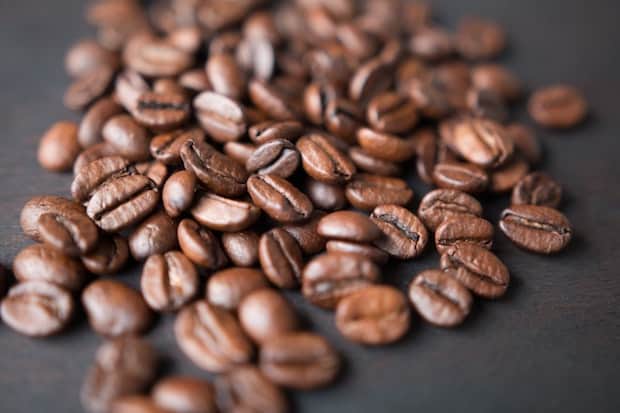
Espresso beans vs. coffee beans
Any coffee bean can be an espresso bean. It’s not the beans that make it espresso, it’s the brewing process.
Espresso is brewed by forcing water at a temperature of around 200 F through ground coffee beans at a minimum nine bars of pressure for 25-30 seconds. And those can be any type or beans.
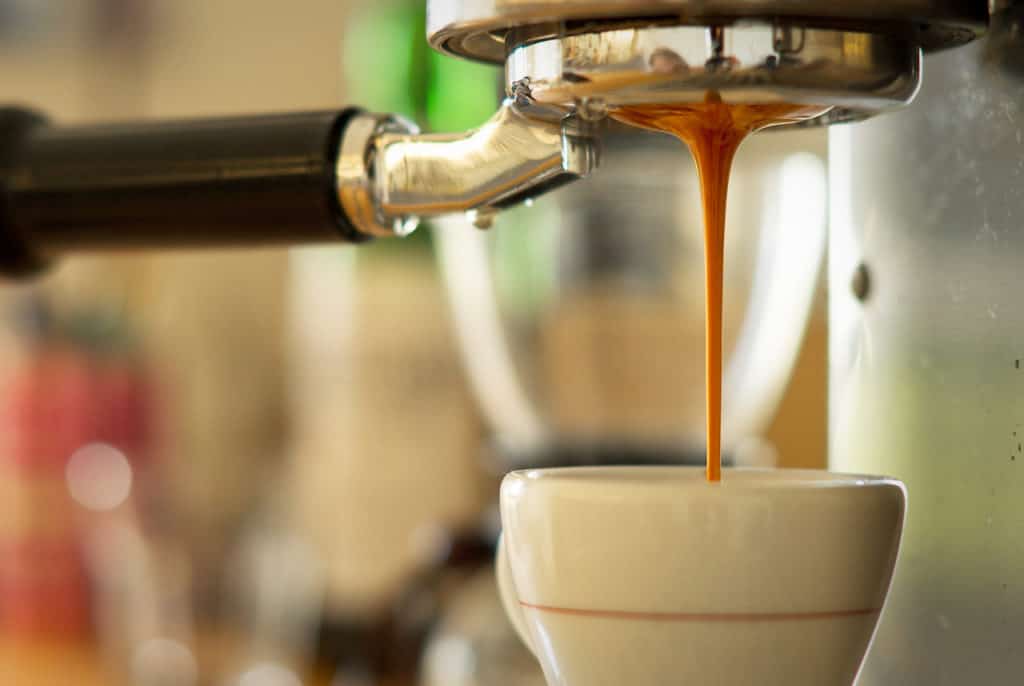
If you’re just getting into espresso and you already have a favourite bean you’ve been using to brew your regular coffee, try using it for your espresso. It will probably work for you.
That said, most companies do market designated espresso beans that are roasted to certain specifications, meant to hold up well under the espresso-brewing process and shine as a shot.
Espresso roasts
People associate espresso with bold flavours, so most espresso roasts are fairly dark. These hold up better under the fine-grinding process that espresso requires, and they also mix nicely with milk or cream in cappuccinos, flat whites and the like.
Dark roasting brings out the oils in coffee beans, which you’ll need to be aware of if you own a superautomatic espresso machine. These highly automated machines have built-in grinders that are difficult to clean, and the buildup of oily residue over time can render them useless. If you’re concerned about your machine, look for roasts that are on the dark side but stop just short of oily.
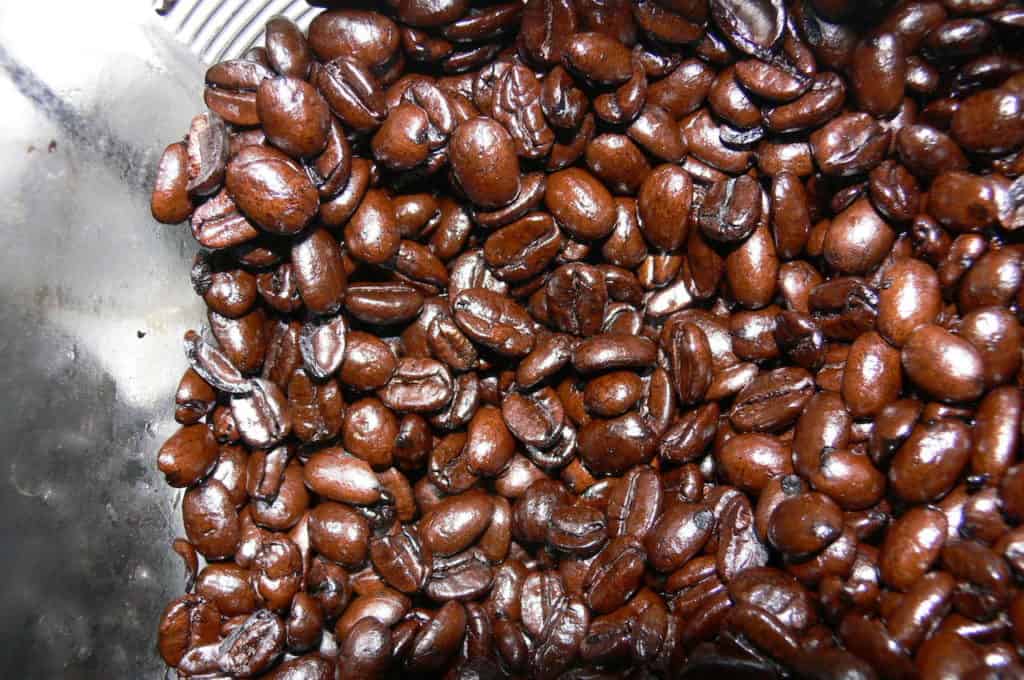
Arabica vs. Robusta beans
Most espresso, and indeed most coffee we drink, is made from two main species of coffee: Arabica and Robusta.
Coffee connoisseurs know that Arabica is the more elegant and complex of the two, and generally tastier due to its higher fat and sugar content. That doesn’t mean Robusta doesn’t have its place, though. Robusta has more caffeine, so it is frequently used in blends that are going for a kick. It’s also easier to farm, and therefore less expensive.
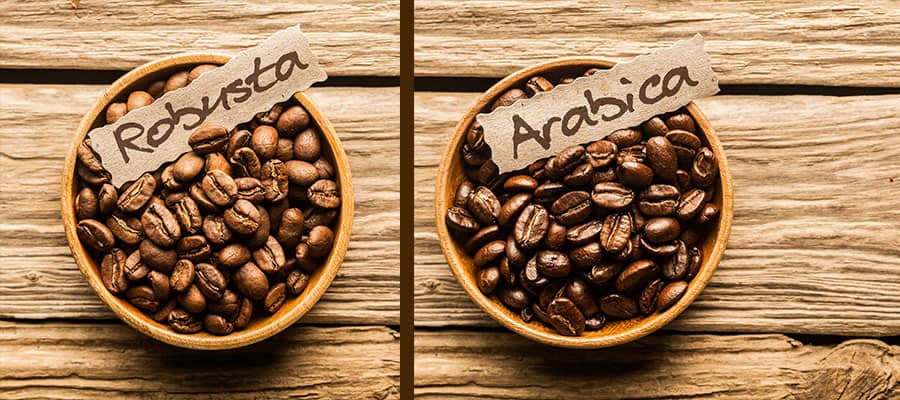
Craft Coffee Guru has more on the differences between these two beans. Click on the image if you want to do a deep dive.
Single-origin or blends?
Single-origin coffee beans are those that come from one kind of plant, grown in one place. They aren’t mixed with any other beans, so if the coffee has a distinctive character that represents its origins, you are sure to taste it.
Blends are mixes of beans. They pull together beans that come from different types of plants, or from different places, or both. They are often roasted separately before blending. Typically, the goal is to put together a blend where the characteristics of each bean will complement the others.
You can read more in our post about single-origin coffees vs. blends.
Espresso brewing tips
Grind size
People who have been brewing espresso for a while will tell you that grind size is everything. It’s not everything—there are few other things you have to get right, too—but it is the most important thing. We have heard people criticize certain espresso beans for being “too sour” or “too watery,” but this is almost always a brewing error that starts with the grind.
With espresso, you have to start fine and go from there, so you will need a high-quality burr grinder. You cannot make great espresso with a typical blade grinder.
It takes experimentation. You are going to waste some coffee along the way, but that’s part of the fun of learning.
Generally speaking, if your coffee is too bitter then your grind is probably too fine. If it’s sour and watery, then it’s not fine enough. Other factors like the duration of your pull can have an effect, too.
Tamping
Tamping is the act of compacting and flattening the bed of ground coffee in the portafilter before you brew. It’s such an important step that it has its own tool, the tamper. You want to apply 30 pounds of pressure with the tamper. Practice on a kitchen scale to get a feel for how much this is.
Make sure the top of your bed is flat so the water from your espresso machine passes through it evenly. Water always takes the path of least resistance, so if any of your coffee is packed less tightly than the rest, that’s where the water will go. And if all the water heads for one place, your coffee will be over-extracted there, but under-extracted elsewhere. You’ll have a combination of bitter and sour flavours!
Pre-infusion
Pre-infusion is another step that helps ensure even extraction throughout the grounds. Most espresso machines allow you to let a bit of water into the portafilter to soak the coffee before the pressure starts, encourgaing a nice even flow of water through the grounds during the brew. The water is much less likely to look for its own channels.
Tell us your favorites
So that’s eight of the best coffee beans for espresso. Most are easy to find online. If you have any of your own favorites that Bean Poet readers should know about, leave a comment on our Facebook post.
Finally, you can up your espresso game even further by carefully timing your espresso shots.

